6 Common Spiders That Make Your Skin Crawl
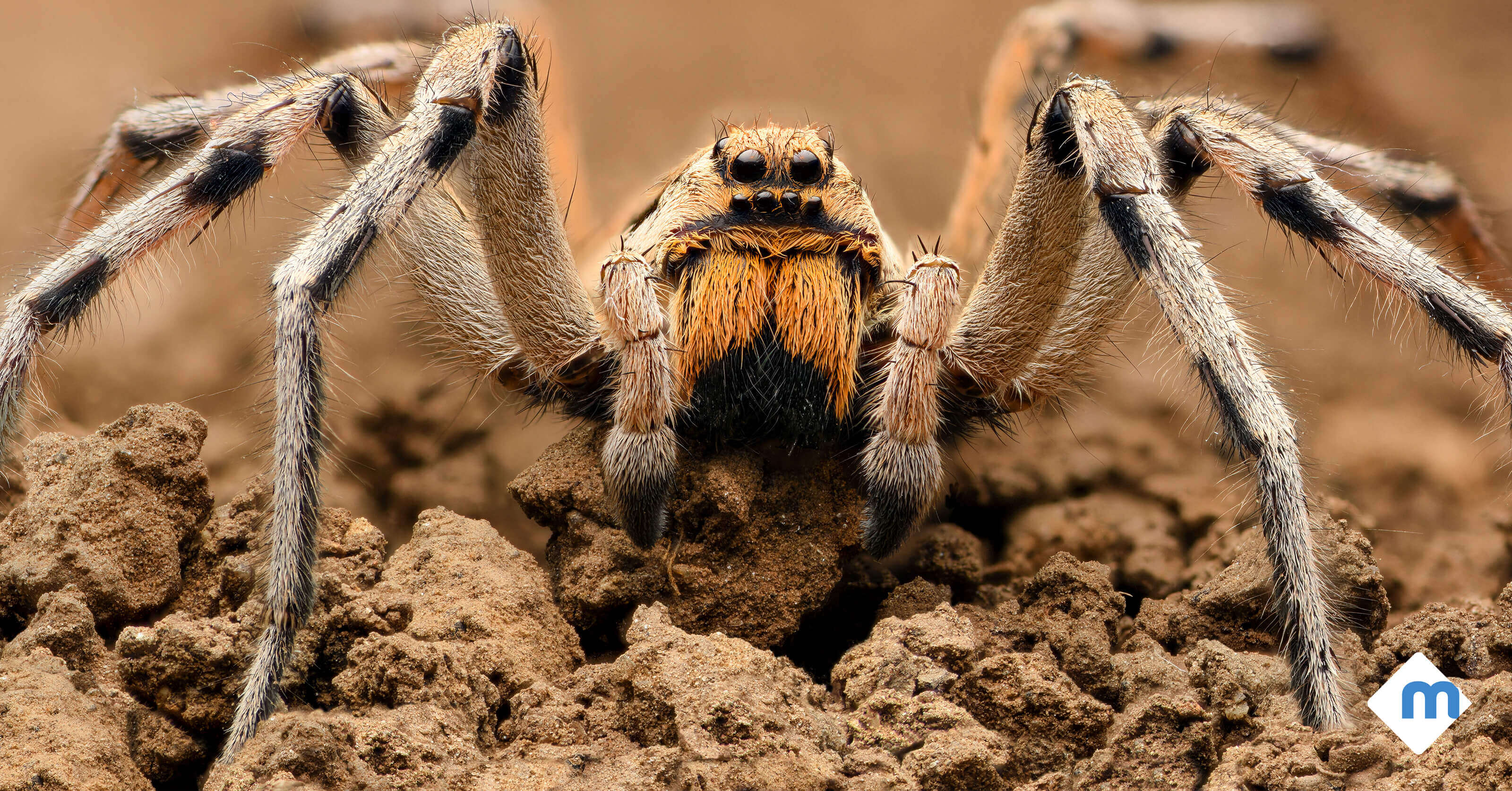
Up close, most pests are pretty unsightly. But there’s just something about spiders that makes them especially hair-raising. Maybe it’s the creepy legs or the eerily quick movements. Maybe it’s the never-ending invasive webs. Maybe it’s the seemingly unnatural number of eyes—okay, so it’s definitely the eyes.
Regardless of what triggers our disproportional dislike for spiders, most of us agree we don’t want them in our homes. Unfortunately, they move in anyway… so disrespectful!
Identifying the spiders invading your home is a crucial step to effectively eliminating them. Different spiders have different anatomies and behaviors—both integral factors in predicting how they interact with pest control products.
It’s also important for the health of your family to know which spiders are docile and which are potentially dangerous. Here, we outline 6 spiders common in the United States, how to recognize them, and what they mean for you.
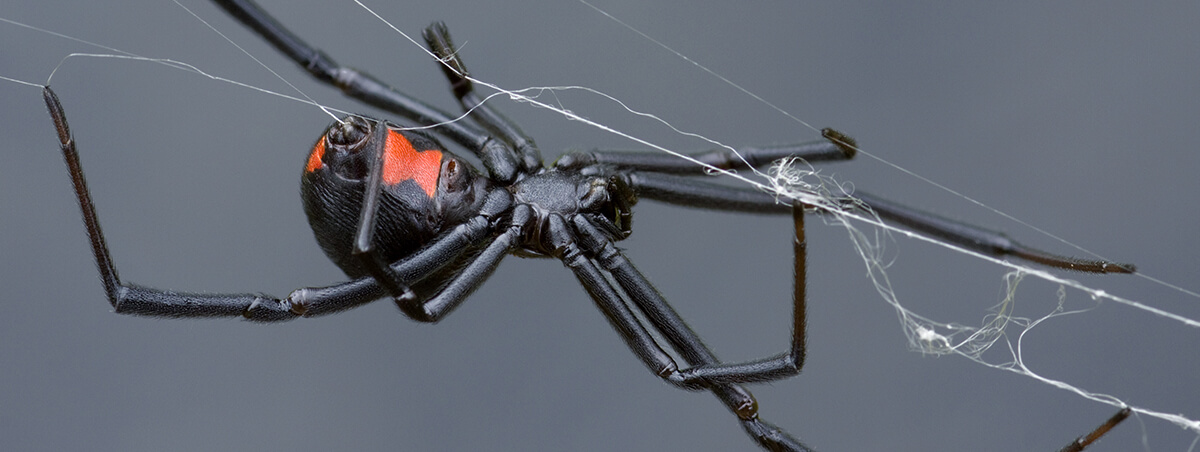
Black Widows
Let’s address the elephant in the room first:
Black widow spiders have an almost legendary reputation for being an ultra-poisonous, avoid-at-all-costs pest. Supposedly, their venom is 15 times more potent than a rattlesnake’s. But the truth is, they’re only poisonous if you’re allergic to them… most bites only result in mild irritation.
Having said that, allergic reactions are potentially deadly, so you probably don’t want to find out if you’re allergic. Symptoms to watch out for are nausea, muscle aches, and difficulty breathing. The good news is black widows are actually not very aggressive and will really only bite if you touch them.
Black widows are pretty easily identified with their shiny, black bodies and red hourglass-shaped emblem on their abdomens. Like most spiders, they catch their prey in webs and also use the webbing to suspend egg sacs. Perhaps the most disturbing fact about black widows is that after mating, the females occasionally kill and eat their mates.
Enough said.
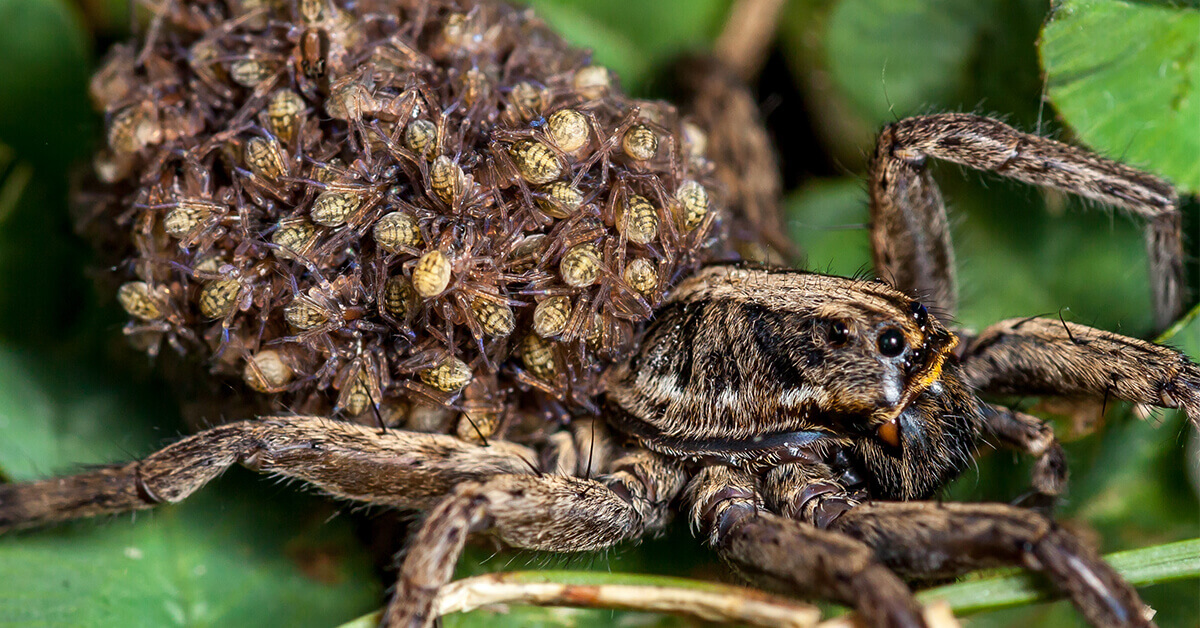
Wolf Spiders
These intimidatingly named spiders actually don’t spin webs. They catch their prey by hunting, like wolves. Consequentially, they are pretty brazen and frequently seen out in the open, especially near windows, storage areas, and house plants. Regularly cleaning these areas can help keep them clear of other pests, and thus make them less-than-ideal hunting grounds for wolf spiders.
Wolf spiders are patterned with grey, black, and brown colors. They are large with thicker abdomens and shorter legs… and they’re hairy.
Few things are more unsettling than a big, hairy bug.
Except maybe a big, hairy bug with tons of little bugs living on it. Yup. Newly hatched wolf spiders will actually live on the abdomen of the mother for a little while, creating the illusion of what can only be described as a horrifying monster. Wolf spider, you’ve really outdone yourself.
Although aggressive to prey, wolf spiders don’t go on the offensive. Bites occur rarely, and usually only when purposely handled. Their bites aren’t dangerous, but they are painful. So despite their frightening (and gross) appearance, they aren’t a life-threatening foe.
Go ahead, let out that deep sigh of relief!
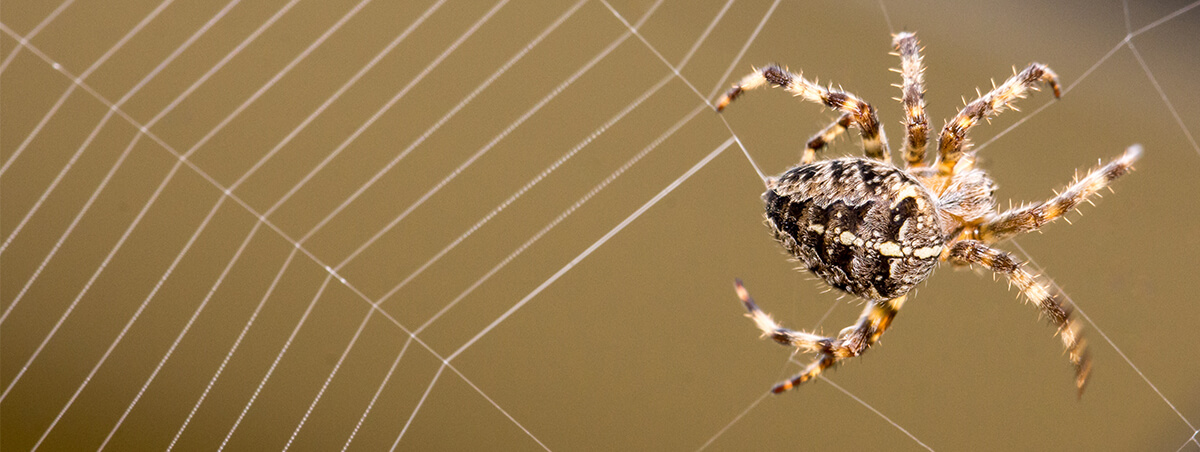
Common House Spiders
A very creatively named spider, common house spiders are the ones most commonly found indoors—and are therefore the rudest. Even worse, they like to spin their webs all around your house. Who knew a tiny bug would rival your toddler in mess making? Ugh.
Common house spiders are smaller in size and yellow/brown in color with dirty-white speckles and black stripes. Their egg sacs are round and brown, and there can be more than one sac at a time in a web.
Although invasive, these spiders are generally not dangerous, and allergic reactions are rare. As with all bites, venom affects small children more than adults, so it’s a good idea to be aware of possible allergic reactions when it comes to keeping an eye on kids.
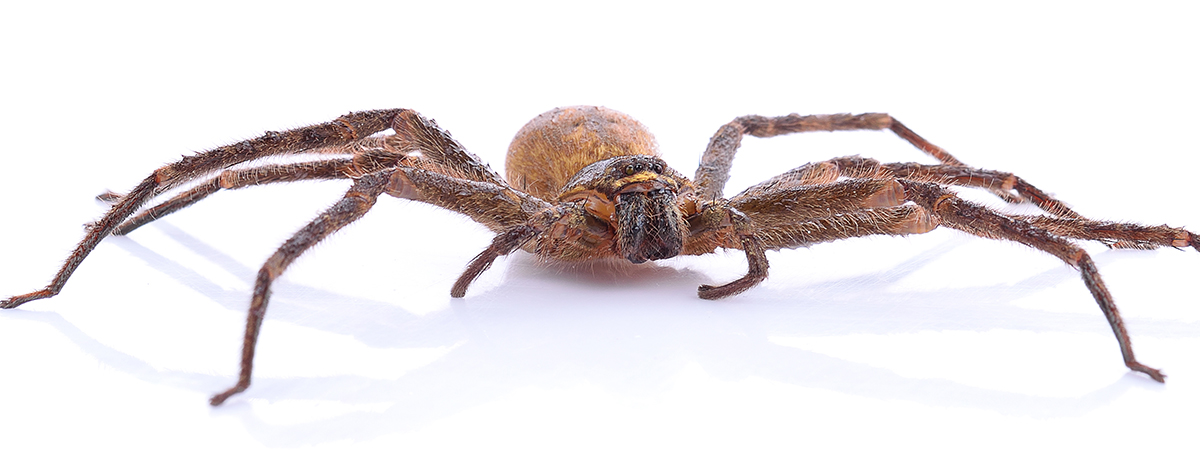
Brown Recluses
Brown recluse spiders are variable in size, can have relatively long legs, and are (you guessed it!) brown in color. Also, they very distinctively shed their skins (like snakes). Despite being stomach-churning, the molted skins can be incredibly useful in identifying them.
Like wolf spiders, they do not lure prey with webs, opting instead to hunt nocturnally. They prefer dark, secluded spaces. Annoyingly, brown recluses are resilient and can survive months without food or water in both suffocating hot attics and freezing cold basements.
Brown recluses aren’t especially aggressive, but bites do happen. Usually, bites will only leave small, red bumps that go away completely within a couple weeks. In rarer cases, however, bites may turn into necrotic lesions. If gone untreated, these nasty lesions can stick around for months and even leave scars.
Who wants a lasting reminder like that of an uninvited pest?
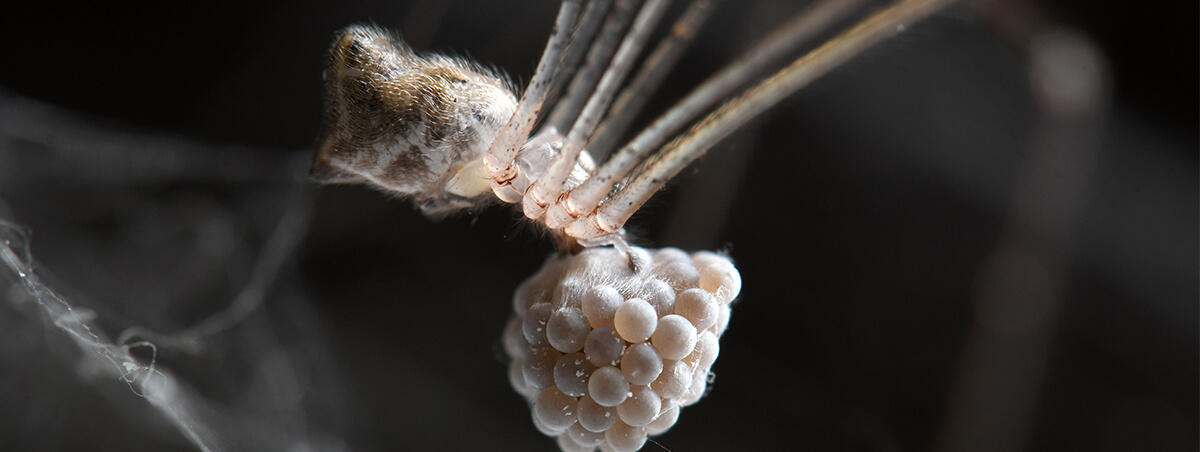
Longbodied Cellar Spiders
Longbodied cellar spiders have long, thin, yellow/tan abdomens and extremely long, thin legs. They can be found indoors throughout the year, especially in dark, secluded spaces like garages, basements, and (surprise!) cellars.
These creepy-crawlies spin webs from which the females will hang when holding their egg sacs. Interestingly, they will actually avoid predators by vibrating quickly in their webs, making it difficult to see them. Their unique, nonviolent approach earns them a little bit of respect in our books.
Even better, cellar spiders are not known to bite. Hurray!
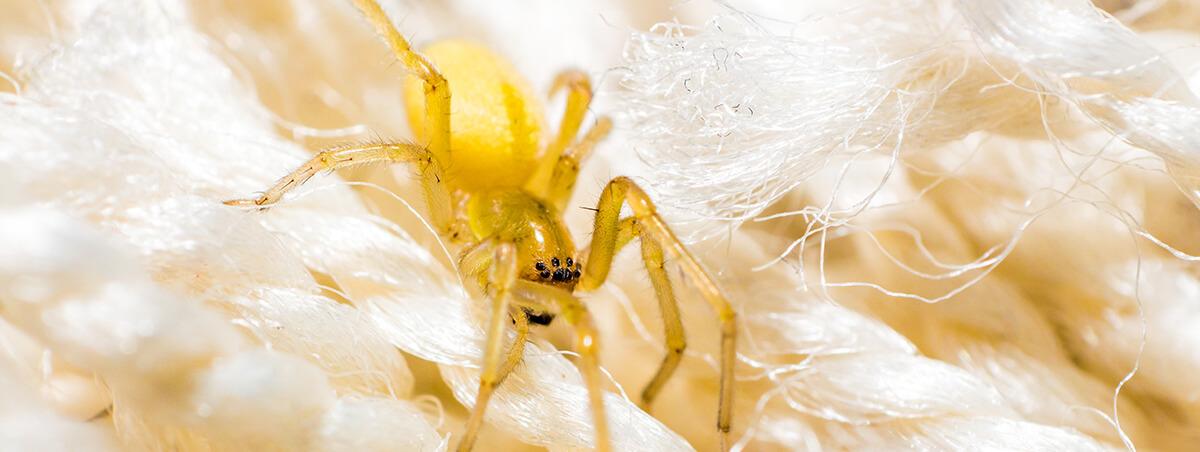
Sac Spiders
Sac spiders, often called yellow sac spiders, are translucent yellow with black/brown tufts of hair at the end of their legs. To some, the tufts look like socks or shoes. That’s almost cute… if they weren’t still spiders.
These sock-wearing pests are found both indoors and outdoors, favoring loose bark and fallen leaves or around clutter. To avoid a surprise infestation, it’s a good idea to keep your yard swept and tidy. They are also nocturnal, spending daylight hours in web sacs while hunting at night.
Yellow sac spiders will bite aggressively when trapped. The bites are quite painful, but thankfully not harmful.
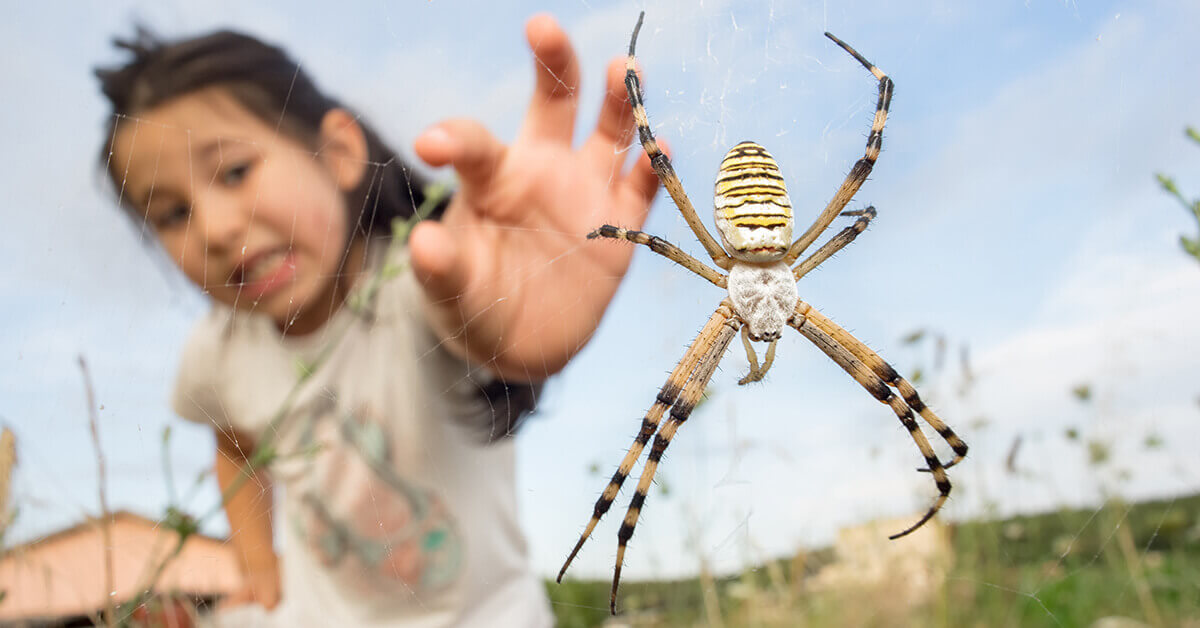
All in all, spiders are the worst type of houseguests—the ones who just won’t leave. But why? Spiders are irritatingly difficult to get rid of for multiple reasons.
For one thing, spiders’ anatomy plays a crucial role in their ability to avoid your attempts at eradication. Their relatively long, maneuverable legs allow them to tiptoe right over pest control products. And since many spiders’ lungs are on their abdomen, this height advantage means they can keep their respiratory system further away from pesticides.
Spiders can also literally travel from area to area using the wind. So if they decide to float on over to your property, there’s not much you can do to stop them. And while removing webs is helpful, spiders can rebuild them in a matter of minutes.
For these reasons, fighting spiders by yourself can be exhausting and fruitless. To eradicate these arachnids, you a professional can help. At Moxie, we inspect your property for spider activity, identify the culprits, and develop a treatment plan best suited to your spider issues. We can utilize multiple treatment methods based on the exact spider you’re seeing and implement a customized solution, as opposed to you knocking down webs alone. If you have any questions about spiders or spider treatments, contact us. Spiders are repulsive nuisances… so let’s kick them out!

